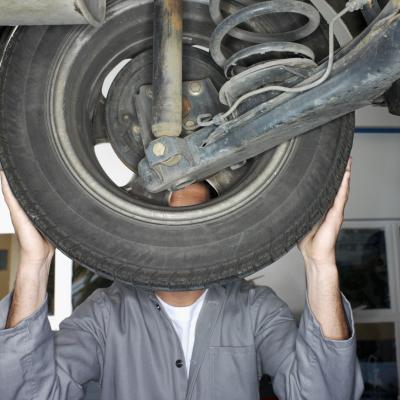
Standard Chevrolet trucks have been using the same basic suspension setup since the early 1960s. The setup consists of a coil spring independent front suspension. The coil is mounted between upper and lower control arms. The rear suspension consists of a solid rear axle with leaf springs between the axle and frame. Shock absorbers are fitted at each wheel. There are several factors that may make your Chevrolet truck bounce on the freeway. It could be the truck, or the freeway itself.
Chevrolet trucks experience a problem known as "beam shake." This problem generally occurs between 40 and 60 mph and is more pronounced on concrete freeway sections. A harmonic is set up between the truck and the constant bumps where the sections curl up at the expansion joints. There is a technical service bulletin -- TSB 223305 -- that address this issue on the 2004 Chevrolet Silverado and other models. The same problem is noted in TSB 223296 for the 1999 Silverado and other models. You can check with the dealer to see if your model is affected and how much the parts cost.
The load in the truck may be a factor. An empty bed may contribute to bounce because the springs do not have any weight on them and they are a bit stiff.
Shocks are what dampen the oscillation of the springs. They do not support any weight; the springs do that. They prevent a continuous up-and-down action as the truck goes over bumps by damping the up-and-down motion of the springs. This is called “compression” and “rebound.” Worn shocks are the No.1 reason for a bouncing vehicle. They are not controlling the springs. If your Chevrolet's shocks are worn, the truck will bounce on the freeway and any time you hit a bump.
You can check your shocks by bouncing each corner of the truck. Bounce it up and down a few times and let go. If it takes more than two bounces to stop, your shocks are worn and should be replaced.